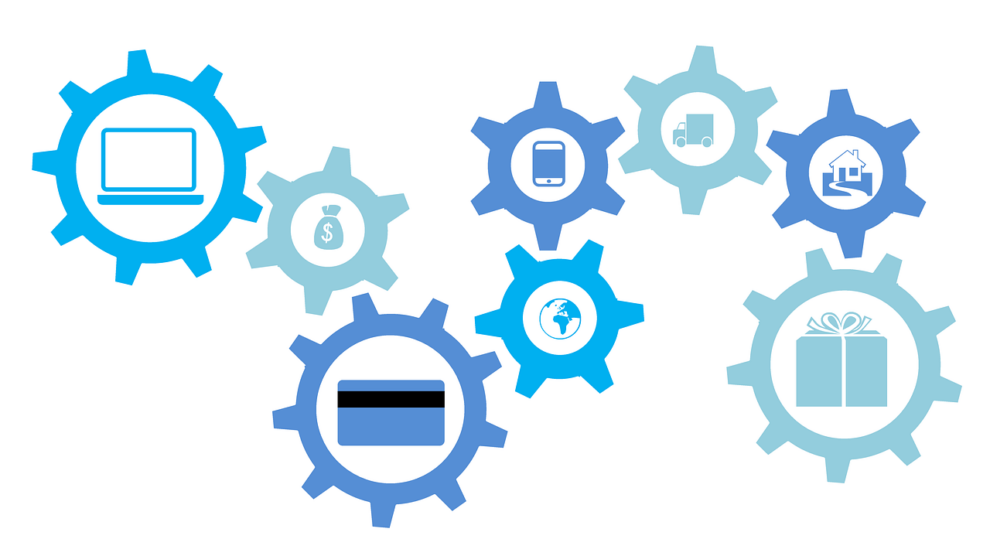In today’s online world, your website needs to be Fast. Like, really fast. Even a tiny delay of 1 second can make shoppers lose interest and leave your store, meaning less money for you. So, for any WooCommerce store owner, making your website super speedy is not optional, it’s Crucial for your success!
What is WooCommerce Performance?
WooCommerce performance is like how fast your doors open and how quickly customers can find what they need. A fast site is like opening the doors wide and making everything easy to find, encouraging people to browse, buy, and come back again. But a slow site is like having long lines and messy shelves, making people leave quickly and go somewhere else.
So, making your WooCommerce store fast is super important for keeping customers happy and making more sales!
The Real Cost of Slowness
The implications of a slow WooCommerce store are far-reaching and can severely dent your revenue.
Here’s how:
- Revenue Impact: Each second of delay can significantly reduce page views, directly affecting your bottom line. For instance, if your e-commerce site earns $100,000 a day, a 1-second delay could potentially cost you $2.5 million in lost sales annually.
- User Experience: Slow loading times frustrate users, leading to a poor shopping experience. This dissatisfaction can diminish brand loyalty and increase cart abandonment rates.
- SEO: Speed is a ranking factor for search engines. A slow website can lower your ranking, reducing your visibility to potential customers.
Understanding User Behavior
People online are impatient! If your store takes more than 3 seconds to load, over half of them will click away, never to be seen again.
That means a slow store isn’t just losing immediate sales, it’s also missing out on future customers who might have come back later.
So, making your store fast is crucial for keeping people around and converting them into happy shoppers!
SEO Implications
Google loves fast websites, just like everyone else! That’s why they use Core Web Vitals to rank search results. Think of Core Web Vitals as a test for your website, checking how fast it loads, how easy it is to use, and how stable it looks.
For WooCommerce store owners, making sure your site passes this test is super important! Faster websites rank higher in search results, meaning more people find your store, and better user experience means they’re more likely to stick around and buy something.
So, optimizing for Core Web Vitals is a win-win situation: happier customers and a more successful store!
Foundations for a Speedy WooCommerce Store
Optimizing your WooCommerce store for speed is not just about making quick fixes but about laying a solid foundation that ensures consistent, fast performance. This foundation spans several key areas, from hosting and server configuration to theme and plugin considerations, as well as image optimization and content delivery strategies.
Hosting & Server Configuration
Choosing the Right Hosting Provider The foundation of a speedy WooCommerce store is its hosting environment. Choosing between managed and unmanaged hosting boils down to how much control and responsibility you want over your server environment.
Managed hosting offers convenience, with the host handling maintenance and optimization tasks, ideal for those who prefer to focus on their business. Unmanaged hosting, while cheaper, requires you to manage and optimize the server, suitable for users with technical expertise.
Consider resource allocation and scalability; as your store grows, your hosting plan should effortlessly scale to accommodate increased traffic and data without compromising performance.
Server-side Optimizations Optimizing your server can dramatically improve your WooCommerce store’s performance. Implementing caching mechanisms like object and page caching can significantly reduce load times by storing a static version of your site for repeat visitors.
Regularly updating to the latest PHP version ensures your site benefits from the latest performance and security enhancements. Additionally, configuring your server settings for security can prevent malicious attacks that slow down or compromise your site.
Monitoring & Maintenance Ongoing performance management is crucial. Utilize tools such as Google PageSpeed Insights, GTmetrix, or Pingdom to monitor your site’s performance and identify areas for improvement. Regularly updating server software, monitoring resource usage, and scanning for vulnerabilities are practices that keep your store running smoothly and swiftly.
Theme & Plugin Considerations
The theme you choose significantly impacts your store’s speed. Opt for a lightweight, well-coded theme designed for speed and optimized for WooCommerce. Features to look for include minimalistic design options, speed optimization settings, and compatibility with major plugins. Avoid themes bloated with features you’ll never use, as they can slow down your site.
Plugins add functionality to your WooCommerce store but can also slow it down if not carefully managed. Deactivate and delete unused plugins to reduce unnecessary load on your server. Explore alternative plugins that offer better performance and regularly check for plugin conflicts that can degrade your site’s speed.
Keeping your themes and plugins updated is crucial for both security and performance. Developers regularly release updates that patch security vulnerabilities and optimize for speed. Ensure automatic updates are enabled or regularly check for updates to maintain a secure and efficient online store.
Image Optimization & Content Delivery
- Image Optimization Techniques Images are often the largest files on a web page, significantly affecting load times. Optimize images by compressing them and resizing them to the dimensions they will be displayed on your site. Choose the proper format (JPEG for photos, PNG for graphics with transparent backgrounds) to reduce file size without sacrificing quality.
- Lazy Loading Images Lazy loading is a technique that delays the loading of images until they are about to enter the viewport. This method improves the perceived loading speed of the page, as users can start interacting with visible content faster, while off-screen images load in the background.
- Content Delivery Networks (CDNs) CDNs distribute your store’s content across multiple, geographically diverse servers, allowing users to download data from the closest server, reducing load times. Implementing a CDN can significantly speed up access to your site for users worldwide, enhancing the user experience and potentially increasing global sales.
- Minifying & Combining Resources Every external CSS or JavaScript file requires an HTTP request, which can slow down your site. Minify (remove unnecessary characters) and combine (merge multiple files into one) CSS and JavaScript files to reduce the number of HTTP requests and the size of files that need to be downloaded, speeding up your site.
Advanced Speed Optimization Techniques
Optimizing the speed of your WooCommerce store involves more than just the basics. To truly excel and provide a seamless shopping experience, diving into advanced optimization techniques is essential. These techniques focus on refining your store’s underlying infrastructure and ensuring it operates at peak efficiency.
Database Optimization
- Techniques for Cleaning & Optimizing the WooCommerce Database: Over time, your WooCommerce database can accumulate unnecessary data, such as expired transients, old orders, and unused tags, which can slow down your website. Regularly cleaning your database by removing this bloat helps in maintaining optimal performance. If you need help optimizing your WooCommerce store, it’s a good idea to hire a woocommerce developer who can handle the database cleanup and optimization.
- Tools and Plugins for Automated Database Optimization: Several tools and plugins automate the process of database optimization, making it easier to maintain a clean and efficient database. WP-Optimize and WP Rocket are popular choices, offering features to clean up your database with minimal effort.
- Importance of Regular Database Maintenance for Sustained Performance: Consistent database maintenance is crucial for sustained website performance. Regularly scheduled cleanups ensure that your database remains efficient, directly impacting your store’s loading times and overall user experience.
Code Minification & Caching
- Minifying JavaScript & CSS Files: Minifying your JavaScript and CSS files reduces their size by removing unnecessary characters without changing their functionality. This results in smaller file sizes and faster loading times, improving your store’s performance.
- Utilizing Page Caching Plugins for Efficient Content Delivery: Page caching plugins store static HTML versions of your pages, reducing the need for PHP and database queries on subsequent visits. This significantly speeds up content delivery, enhancing the user experience.
- Different Types of Caching Plugins and Their Functionalities: Various caching plugins offer different functionalities, from basic page caching to object caching and database query caching. Understanding the features of plugins like W3 Total Cache, WP Rocket, and WP Super Cache can help you choose the right tool for your needs.
Mobile-Specific Optimizations
With mobile commerce growing, ensuring your WooCommerce store is optimized for mobile devices is crucial. This means not only fast loading times but also a seamless and intuitive shopping experience.
Adopting responsive design principles ensures your store looks and functions perfectly across all device sizes. This includes using flexible grids, scalable images, and testing on various devices to ensure compatibility and performance.
Tools like Google’s Mobile-Friendly Test and PageSpeed Insights offer valuable insights into how your store performs on mobile devices, offering recommendations for improvement and optimization.
Leveraging Browser Caching
Setting Appropriate Cache Headers for Faster Repeat Visits: By setting the right cache headers, you instruct browsers to store certain files locally, speeding up repeat visits as these files do not need to be downloaded again. This can significantly enhance the user experience for returning visitors.
Browser Caching Mechanisms and Their Impact on Website Performance: Browser caching mechanisms, such as Expires headers and Cache-Control, play a key role in determining how long browsers store cached content. Properly configuring these settings can lead to noticeable improvements in site speed.
Tools and Plugins for Configuring Browser Caching Settings: Plugins like W3 Total Cache and WP Rocket make it easier to configure browser caching settings, providing a user-friendly interface to manage cache headers, expiration times, and other caching parameters.
Testing, Monitoring, and Staying Ahead
Ensuring your WooCommerce store remains fast and responsive requires ongoing attention and adaptation. Through a combination of testing, monitoring, and staying informed on the latest practices, you can maintain an edge in the competitive eCommerce landscape.
Tools such as Google PageSpeed Insights and GTmetrix are invaluable for identifying performance bottlenecks. They provide a comprehensive analysis of your website’s speed and offer actionable recommendations for improvement.
Understanding key metrics like First Contentful Paint (FCP), Time to Interactive (TTI), and Largest Contentful Paint (LCP) helps you gauge the user experience and identify areas for improvement. Each metric offers insight into different aspects of your site’s performance, guiding your optimization efforts.
A/B Testing & Continuous Improvement
Implementing changes based on A/B testing allows you to measure their impact directly on real user experiences. This data-driven approach ensures that optimizations contribute positively to your store’s performance and conversion rates.
Start with clear hypotheses, test one variable at a time, and use a significant sample size to ensure reliability. Tools like Google Optimize can facilitate A/B testing, helping you make informed decisions about website changes.
Monitoring Ongoing Performance
Keeping Track of Key Metrics and Identifying Potential Issues Regularly monitoring key performance metrics allows you to spot and address potential issues before they affect user experience. Set up alerts for significant changes in performance indicators.
Tools and Dashboards for Monitoring WooCommerce Performance Use tools like Google Analytics, Jetpack, and New Relic to monitor your WooCommerce store’s performance. These platforms offer dashboards that provide real-time insights into your website’s health and user engagement.
Staying Updated with WooCommerce & Best Practices
Stay agile by adapting to new WooCommerce releases and industry trends. Each update can bring optimizations and new features that enhance performance and user experience.
Engage with WooCommerce forums, blogs, and social media channels. Platforms like WooCommerce’s official blog, WPBeginner, and the Advanced WooCommerce Facebook group offer valuable insights and community support.
FAQs
Q-1 How Slow is Too Slow for My WooCommerce Store?
A loading time of more than 3 seconds can significantly impact user experience and conversion rates. Aim for sub-2-second load times for optimal performance.
Q-2 What Are the Most Impactful Speed Optimization Techniques?
Optimizing images, leveraging browser caching, and minimizing CSS and JavaScript are among the most impactful techniques. Regularly monitoring and testing can help identify which strategies are most effective for your store.
Q-3 Do I Need a Developer to Optimize My WooCommerce Store?
While many optimization techniques can be implemented without technical expertise, some advanced strategies may require a developer’s assistance, especially for custom themes or complex issues.
Q-4 How Often Should I Test and Monitor My Store’s Performance?
Regular testing and monitoring are vital. Monthly checks are a good practice, with more frequent monitoring during high traffic periods or after making significant changes to your store.
Conclusion: Elevating Your WooCommerce Store with Speed
Optimizing your WooCommerce store for speed is a continuous endeavor that requires strategic planning, regular monitoring, and adaptation to new technologies. The benefits of a speed-optimized store include enhanced user experience, better SEO rankings, and increased revenue. Speed is not merely a feature but a fundamental element that unlocks the full potential of your e-commerce venture.
By prioritizing speed, engaging with the community, and applying best practices, you can ensure your WooCommerce store remains efficient, competitive, and attuned to user expectations, driving your business towards sustained success.





